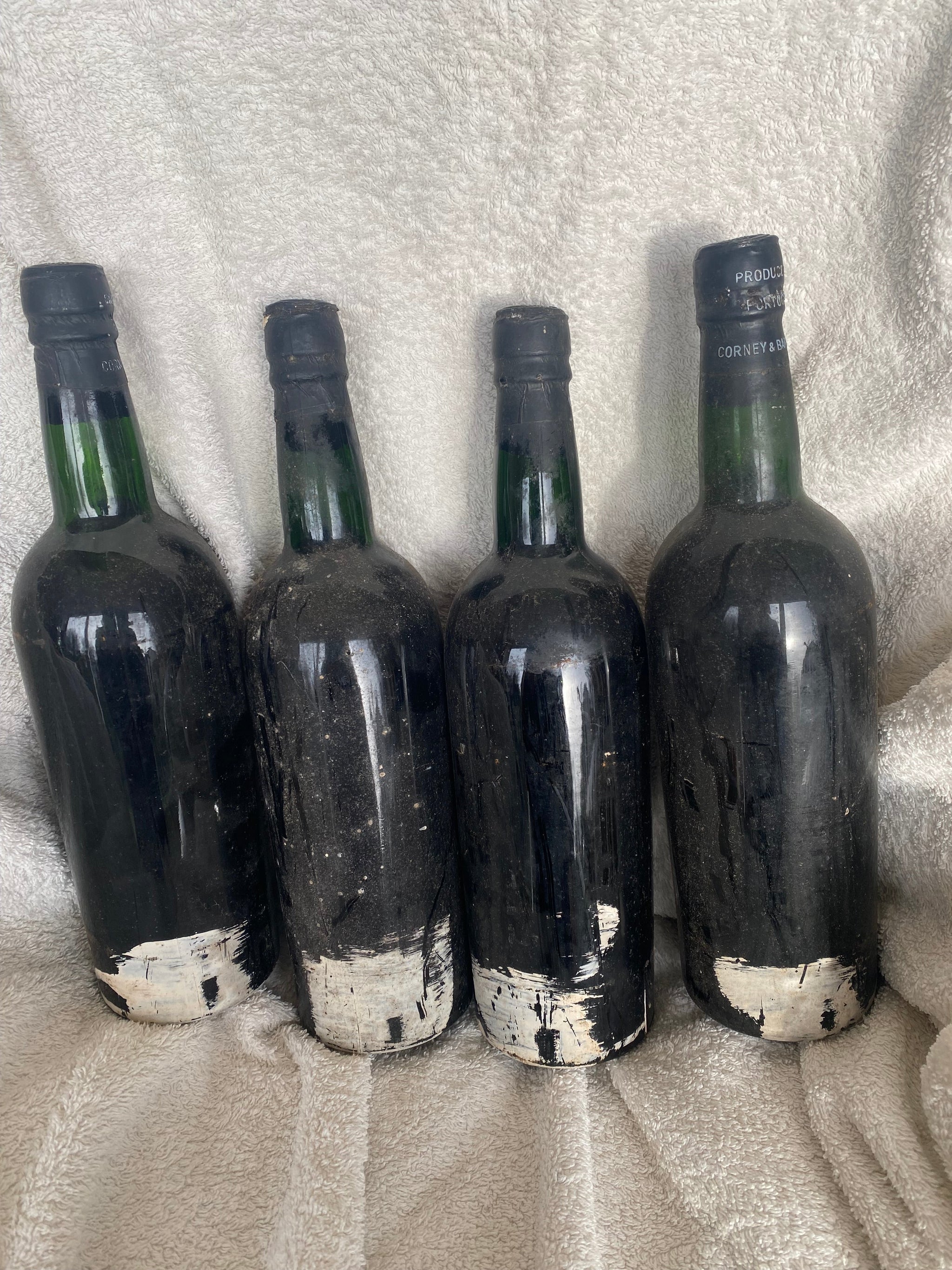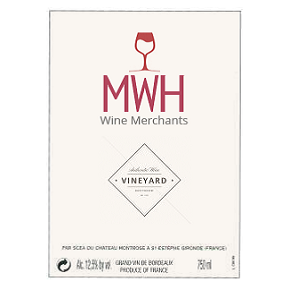With the possible exception of some of the more esoteric of the world’s fine wines – Malaga, Alsatian Riesling or Coteaux Champenoise – there can be no more misunderstood a wine than Madeira. This wonderful, complex, often dazzlingly brilliant product of that small Atlantic island is one of the wine trade’s great secrets. For any lover of serious quality fortified wines such as Port or Sherry it is a must-try; especially as it remains one of the most undervalued wines on the market.
In this latest blog from MWH Wines – the home of affordable fine wines – we’ll guide you as to what Madeira is (and what it’s not!) the styles and give you some recommendations as to the shippers that are worth looking out for.
What is Madeira…?
Madeira is a fortified wine made on the Atlantic Portuguese island of Madeira which lies off the west coast of North Africa. Like Port it is made by creating a table wine (though rather than just using red varieties as they do for Port, the grapes used can be red or white) which once fermented is ‘shocked’ by having grape spirit added to it.
Once made the wine is either left out on terraces in glass demijohns to be warmed by the Madeiran sun or (for cheaper and less well-aged wines) by being heated in tanks to around 35 degrees centigrade. The purpose of this warming – known as ‘estufagem’ – is to replicate the effects of barrels being warmed as they were shipped to the American colonies by the British in the 18th century.
While in any other wine region the idea of heating wines would be regarded as heresy, in Madeira’s case it is essential. The warming reduces the high levels of natural acidity and imparts that wonderful caramel and butterscotch undertone that is the trademark of Madeira of all styles.
… And What It Isn’t!
To many people Madeira is a) a form of Sherry b) sweet c) an old maid’s drink and d) a cake. Let’s take these in turn:
- Well, given it is made in Madeira from different grapes and in a different way we can dispel the first misconception fairly easily
- As to its style, it can indeed be sweet and a good Malmsey or richer style of Bualis one of the wine world’s great joys. However, try a well-aged Sercial or Verdehlo and you’ll discover that this mercurial wine can equally be searingly dry
- While many an old maid has certainly sipped on a glass of Madeira – especially in 19th century literature – I personally have been captivated by the wine since my first taste (an 1898 Solera Verdehlo by Henriques and Henriques in 1993) and I know many other sub-fifty-year-old male ‘maids’ who adore this extraordinary wine
- It is a cake, but if you visit Madeira – and I’d urge you to – you’ll find that a Madeira cake has more in common with a booze-laced Dundee cake than the pale, vanilla-tinted sponge that we know as one
Styles of Madeira
As mentioned above, Madeira runs the gamut of styles, from the bone dry to the unctuously sweet with pretty much everything in between. As a basic guide the following are the main styles and their level of sweetness roughly corresponds with where on the island they are grown – the higher the vine, the drier the wine. So, working from the ground up we have:
- Malmsey – this is the sweetest style and good examples offer a palate that is full of honey, raisins, coffee and dried figs with a balancing, refreshing acidity that keeps everything in check. As with all Madeira, it gets drier with age so a well-aged Malmsey (one with 10 or 15 years in cask) could taste closer to a Bual.
- Bual or Boal– slightly less sweet but with a noticeable flavour of sweetened coffee, nougat, honey and smoked citrus acidity, this style always feels slightly more refined and complex to me than Malmsey.
- Verdehlo – off-dry, if such a term can be applied to Madeira, this is a wonderful style of wine that even with modest age – 5 or 10 years old – can be spectacular. Ripe and full with notes of dried white fruits, overtones of fragrant honey and with a clean, crisp citrus acidity, it is undoubtedly my favourite style and one that lends itself to be a stylish chilled aperitif as well as an after-dinner sipper.
- Sercial – this is hardcore. Rarely worth drinking until at least a decade old, this dry style has the characteristic fresh, zesty Madeira acidity but without the puppy fat of sugar that the other styles have. It needs plenty of time in cask to balance the stone fruit, citrus, mocha and mineral notes that make up its profile.
These styles all take their names from the grapes from which they are made. In addition to these there are several other grape varieties you may see:
- Tinta negra mole – this makes up 85% of all Madeira, the bulk of the cheap stuff, the majority of which is used in cooking. Enough said.
- Bastardo– rarely seen and most often on vintage wines, it tends to be made into medium-dry styles. At a tasting in London a few years back I had 1930 Bastardo which with its blend of green jelly babies and coffee-soaked grapefruit was one of the greatest I have ever had.
- Terrantez– tending toward the drier styles, the grape’s natural acidity makes for a fresh-tasting wine that can age brilliantly over very long periods of time.
- Moscatel – very rarely seen, it was once popular for making sweeter styles and has a lovely fragrance that is dominated by white fruits and honey
Shippers
As with Port, the ‘best’ shipper is very much a matter of taste. For us the following make wines of a consistently high standard:
- D’Oliveras – stylish, old-style Madeira whose wines are packed with concentration yet retain a lightness of touch
- Henriques and Henriques– the Taylors of Madeira in as much as they are the best known and create wines of style and power
- Leacock, Blandy, Cossart Gordon and Miles –these are all brands of the Madeira Wine company and all are worth a look. Their 3 and 5-year-old wines are better than most incarnations of Tinta Negra Mole wines, and when you get into the realms of 10-year-old and vintage wines their wines really let the traditional white varieties shine
- Barbeito – a relative newcomer (founded in 1946) their style is more delicate and ‘modern’ and appeals to the Far Eastern market in particular
Vintage And Age Statemented Madeira
Until relatively recent vintage Madeira wasn’t that common, but as the market has grown so the marketing teams have realised that vintage wines are an easier sell. Traditionally Madeira has been bottled as:
- 3-year-old – often fine, but nothing too serious and made from Tinta Negra Mole
- 5-year-old – this is where you start to see classical grape varieties, e.g. Verdehlo making it to the label. Can be good, but Sercials are best avoided if you want to keep the enamel on your teeth
- 10-year-old – generally very good and showing what this wine can do
- 15-year-old – the epitome of commercial wines and the point where Sercial becomes an option and Malmsey shines
- Solera – I mentioned an 1898 solera above. Like Sherry, a solera is a barrel that originally contains wine from that vintage and which is topped up with wines from younger years. These can be spectacular
- Colheita – is blended from wines that must be at least 85% from the specified vintage and at least 85% from a single grape variety (all the grapes used must be on the list either of recommended or authorised grapes). It must be aged for a minimum of five years. The label must indicate vintage and bottling date.
Madeira: A Voyage Of Discovery
Madeira is a wonderful, undervalued and underrated wine that can provide the most extraordinary amount of pleasure. One of its peculiarities is that owing to the way it’s made and the level of oxidation that occurs, once opened it will stay drinkable more or less indefinitely. Also, given the stability of the island’s climate, a vintage Madeira is invariably available – something that isn’t always the way with Port – making it a great vintage wine gift.
If you’d like to know more or would like some help choosing a Madeira, then please get in touch. You can email us here or call 0118 984 4645.


